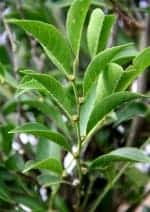Scientists from the Philippines have discovered a new plant with an unusual lifestyle – it eats nickel for a living.

Metal hyper accumulation in the plant kingdom is not unique in the plant kingdom, but it is extremely rare – in the case of nickel, it’s even more so. Throughout the world, only about 450 species are known for hyper accumulation of any kind – which, when you consider the total number of vascular plants (about 300,000 species), is not that much at all.
The new species, according to Dr Marilyn Quimado, one of the lead scientists of the research team, was discovered on the western part of Luzon Island in the Philippines. That area is particularly known for its abundance of heavy metals in the soils, which is why the plant evolved this way.
Potential applications
Hyperacccumulator plants have great potentials for the development of green technologies, for example, ‘phytoremediation’ and ‘phytomining'”, explains Dr Augustine Doronila of the School of Chemistry, University of Melbourne, who is also co-author of the report.
It’s tempting to jump the gun and start thinking about using plants for metal exploitation (phytomining) – but that’s not really how it works. Plants have, of course, shallow roots, which would only allow for a surface exploitation, which is not really economically feasible. Even for gold sterile waste, scientists haven’t been able to make it work (though they’re getting pretty close) – and for a less valuable metal, like nickel, there’s virtually no chance.
But that doesn’t mean that this remarkable trait can’t be used in phytoremediation – using plants to clear out pollution. If you have a landmass that’s polluted with nickel, then Rinorea niccolifera might be a good bet. I’m sure we’ll be reading more studies about this plant pretty soon.
Was this helpful?



